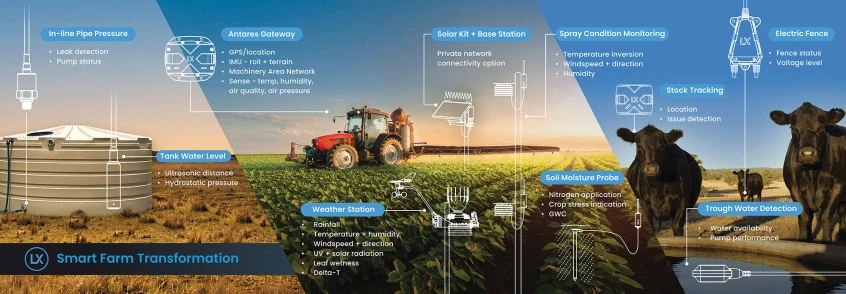
Why You Need a Connected AgTech Ecosystem
Aug 27 2021

How many AgTech devices do you have in your business right now? How many different apps and software programs do you need to run to manage them? Does your tech talk to each other? With exciting new AgTech products arriving in the Australian market every day, it is more important than ever that producers can find complimentary, compatible, and better yet connected solutions. We spoke with AgTech and IoT company LX to find out why and how producers should plan to integrate technology across their business.
About LX:
LX are specialists in connected systems and products for AgTech and over 40 other industries. They have developed a connected ecosystem of sensors for smart farming including soil moisture probes, rodent detection, water level sensing and more – all feeding in to one connected dashboard. See what’s going on your farm at a glance, with LX Sensors and the Incyt by LX App.
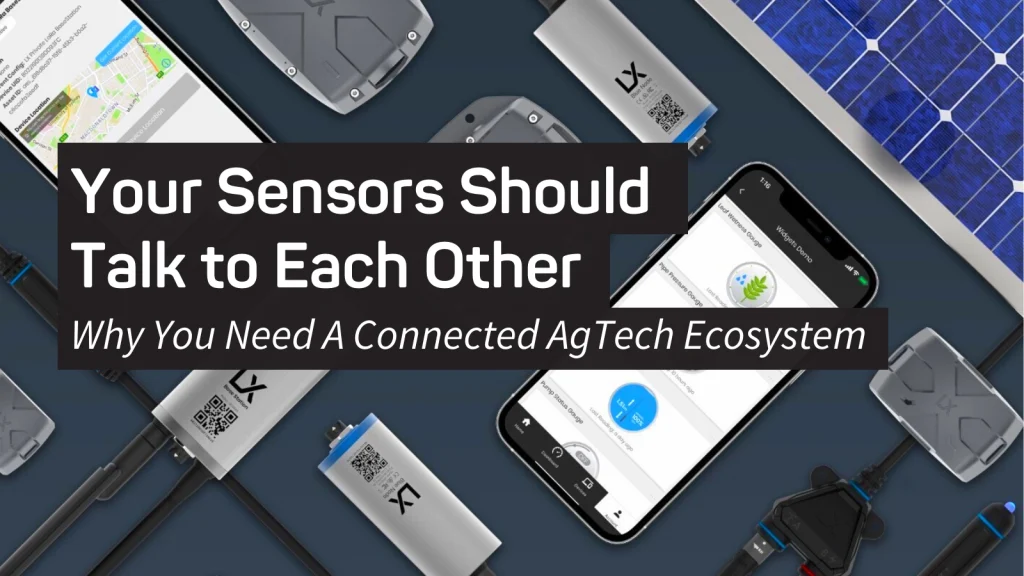
LX: Deploying any new system requires an investment of time and capital, but with a fragmented AgTech marketplace, farmers could easily find themselves with eight or more different providers across their business. When you start to consider the setup and management of AgTech – from installation to software reporting, support and updates, change management and training for your staff etc – managing multiple systems can ultimately negate any time saving, financial, decision making, or administrative benefit the technology promised in the first place.
An ecosystem approach can help solve these issues and ensure you get the benefit out of your devices.
So, what is the best way to plan for integration of technology across your farming operation?
It makes sense to plan AgTech deployment with a ‘big picture’ approach – considering your entire operation now and in the future, with everything that could be impacted by smart sensors and devices. Taking this big picture view, the ideal is to have a connected ecosystem, i.e. multiple sensors out in the field collecting and relaying data back to one central dashboard. Deployment might not all happen at once, but farmers should have the ability to ‘bolt-on’ additional devices as they expand their digital operations.
An Ecosystem Approach – Your Entire Farm In Your Pocket
Aside from avoiding the drain on resources that disparate systems can sometimes create, pursuing an ecosystem approach to AgTech also has tangible benefits.
By having products that can be configured in different ways to provide specific reporting metrics, you can access insights that just aren’t available through an individual sensor. Similarly, by having your reporting in a single dashboard, you can make judgements based on the best available data. For example, by aggregating reporting for soil moisture, water tank levels and weather reporting into a single platform, you get a holistic picture to support irrigation and water management decisions on your farm.
The LX product ecosystem enables this kind of reporting, with insights over time giving users the ability to plan more efficiently and drive increased productivity and profitability. Our core products have been designed to be flexible – with the ability to configure the reporting based on a chosen ‘solution’. For example, a particular product mix from the range might be brought together to provide reporting for mobile hay baling, whilst a different group can be used for frost detection.
For each producer or farmer considering AgTech deployment, their needs will be different and so their technology mix should be unique to them. However, any producer can benefit by using that ‘future thinking’ approach to their purchase decision and asking some of the key questions below.
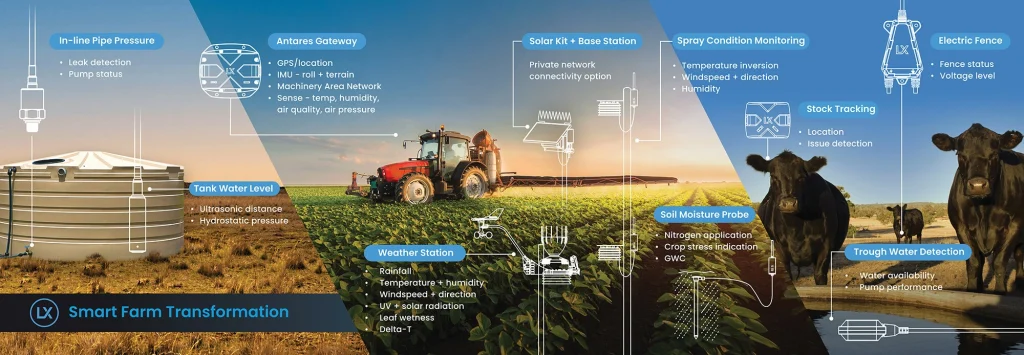
Questions to Ask When Considering AgTech Providers and a Connected Ecosystem
Is it machinery agnostic?
If you’ve invested a significant amount in one type of header, irrigator or other piece of machinery, you want any additional system you choose to be able to work with it, otherwise implementing agtech gets very expensive. Ideally you also want sensors to continue working if you choose to upgrade or change providers in the future.
How flexible is the reporting? I.e. What if I need to increase the frequency or decrease it at certain times?
With any provider, this is a key consideration – seasons change, labour availability changes, extreme weather or pest events occur and you need to be able to react to them with the technology at hand. LX sensor kits (with Blue Node telemetry device) come with a recommended subscription and we’ve done the hard work to sort out what type of reporting and frequency you need for the configured solutions, but you CAN change this if your specific needs require it.
Is there the ability to integrate with other systems if I need to?
Whilst it makes commercial sense that many technology providers want to ‘lock you into’ their particular system (hello Apple Inc.), it’s a good idea to find out if they have integrations with machinery providers or other companies planned. Or at the very least, if they have an API (application programming interface) so you can choose to have that integration built yourself. This process isn’t for everyone as it is often a significant investment, but the size of your operation and particular needs might require it, for example if you want to integrate your farm/labour management software into your sensor reporting system.
What is the required investment for setup – physical installation for the device, connection to network, training etc?
This reiterates the point about weighing up how many systems you might end up with and compounded costs, time and effort to set these up and maintain them. It makes sense that one provider is easier, particularly if (like with LX,) you can buy directly from the designer. Then if you ever need support or want to upgrade your system – you’re dealing with one point of contact.
What are the running costs – cellular connectivity plus upfront hardware?
Most connected sensors will use existing network connectivity like LoRaWAN, and there is a cost associated with this, but it’s always a good idea to compare pricing models and also check the network compatibility in the area you want to deploy these sensors.
How easy is it to read the software – what does the reporting look like?
A connected ecosystem is only worthwhile if the reporting you get from it is useful and intuitive. You should look at the software and make sure you’re happy with how information is presented. Whilst usually there will also be some manual analysis required, the dashboards should be intuitive and easy to navigate, particularly for an ecosystem approach where you have all those different data streams in one place.
How many different solutions do they provide – does it serve all of the immediate needs I have and my future ones?
This reiterates the ‘future thinking’ approach. You should consider not only if a provider offers the main solutions you want now so you don’t fall into the trap of multiple providers and lots of disconnected devices and reporting, but also what are they building?
Check out the range of Incyt by LX products!
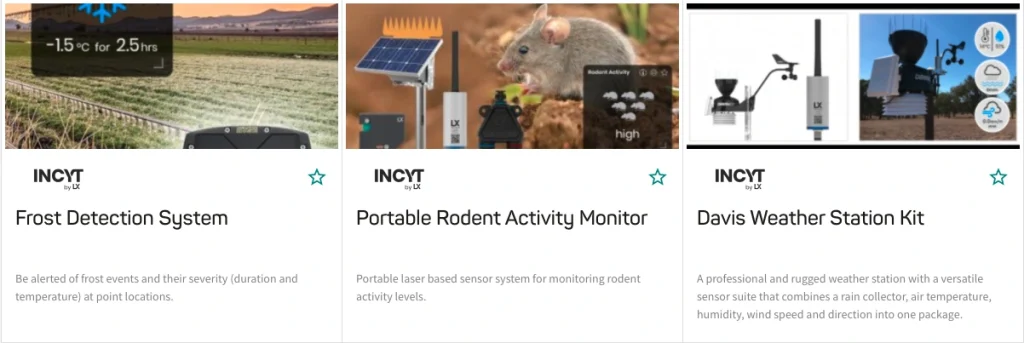
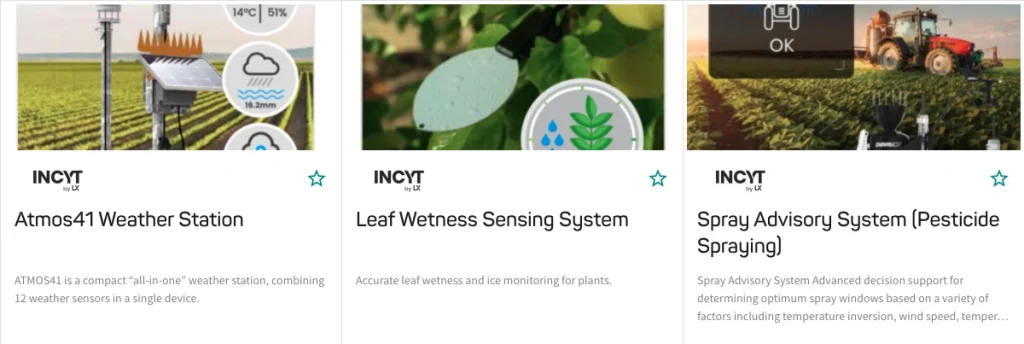
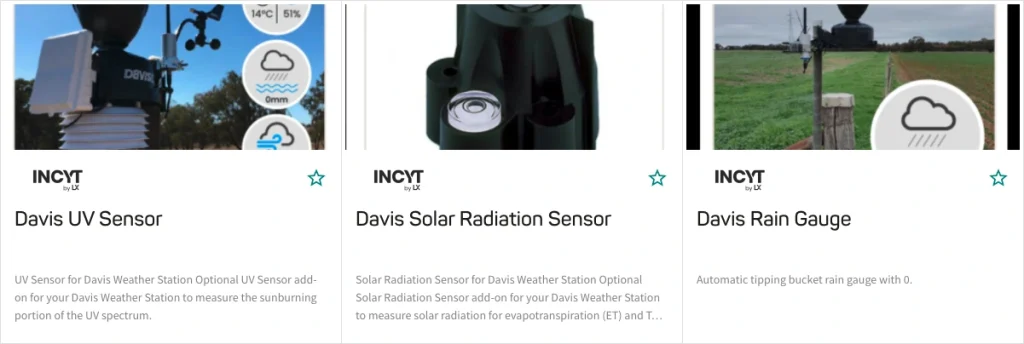
Posted in Farmer Advice
You Might Also Like
Jul 23 2025
Low yields from wheat production? Here’s why.
For the past two decades, agronomists and farmers have been trying to solve the problem of low yields using Variable Rate Fertilisation application. However, yield is only half of the equation. In-field…
Read MoreMay 25 2025
Get more from your livestock data with these six agtech solutions
Farmers across Australia are producing more data than ever. But much of it remains frustratingly siloed. Here’s how you can get the most from your data as a livestock producer.
Read MoreMay 20 2025
Purchasing AgTech? Ask yourself these five questions first.
Whether it’s your first time, or you’ve already got plenty of technology in operation – asking the right questions ensures you take the best approach.
Read MoreApr 22 2025
Building farm data trust
At AgTech Finder we ask vendors to provide their data policies so that farmers can make informed choices about agtech and be comfortable about the way their data is being collected and…
Read MoreList your company on AgTech Finder.
AgTech Finder helps Australian Farmers and producers find the product that’s right for them.
Register now to be a part of the community, get access to a national platform and start gaining insights to improve your products.
